- Home
- A-Z Publications
- Statistical Papers - United Nations (Ser. A), Population and Vital Statistics Report
Statistical Papers - United Nations (Ser. A), Population and Vital Statistics Report
The Population and Vital Statistics Report series presents data for countries or areas on population size (total, male, and female) from the latest available census, estimated total population size for the later available year, and the number and rate of vital events (live births, deaths, and infant deaths) for the latest available year within the past 15 years. These data are presented as reported by national statistical authorities to the Demographic Yearbook of the Statistics Division of the United Nations Department of Economic and Social Affairs.

World Population Prospects 2024
Summary of Results
The Population Division prepares the official United Nations population estimates and projections which serve as the standard figures on population for use throughout the United Nations system including for the global monitoring of the Sustainable Development Goals. The estimates and projections are one of five flagship data products of the Population Division each consisting of a comprehensive global dataset on a specific topic: population estimates and projections population policies numbers of international migrants (stock) family planning indicators and estimates and projections of urban and rural populations. This publication is the only one that presents results from biannually updated population estimates and projections and covers all 237 countries or areas of the world over the time span of 1950-2100.
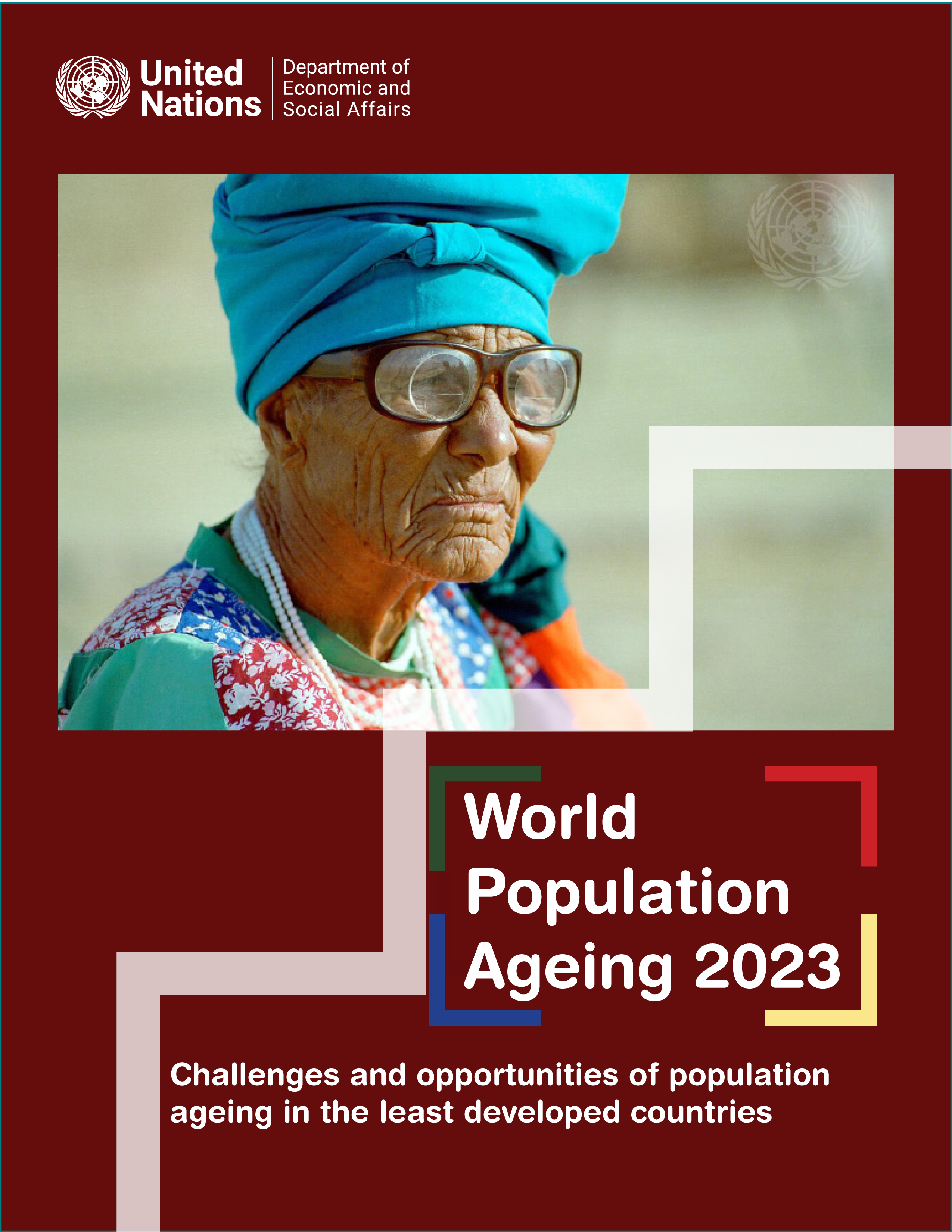
World Population Ageing 2023
Challenges and Opportunities of Population Ageing in the Least Developed Countries
Population ageing is a global phenomenon an inevitable consequence of the demographic transition that is affecting all countries of the world. The report will examine changing population age structures in developing countries with relatively high levels of fertility (at least 4 births per women) with a focus on LDCs in Asia and sub-Saharan Africa. It will also briefly discuss the opportunities and challenges that these countries face in benefitting from the “demographic dividend” – the potential boost in the rate of economic growth per capita during the period when the working-age population grows faster than the total population. The analysis will examine the implications of selected projection scenarios from the World Population Prospects 2022 (WPP22) for trends in the age structure population growth and demographic dividends in LDCs. Most Asian LDCs are approaching the end of the demographic transition from high to low levels of mortality and fertility whereas most African LDCs are in the early stages of this transition which is expected to unfold gradually over the course of the present century. The report will feature case studies of how this gradual shift towards older population age structures may affect the realization of the demographic dividend in different contexts. These case studies (two countries from Asia and two from sub-Saharan Africa) will include a review of the respective demographic economic social cultural and historical contexts to assess the challenges and opportunities in anticipating and preparing for the future ageing of the population in each country. Lessons learnt and best practices derived from experience of countries at different stages of the demographic transition will provide the basis for policy recommendations for Governments of LDCs to support sustainable development social inclusion and adaptation to ageing societies taking advantage of the window of opportunity created by the temporary increase in the relative size of the working-age population.
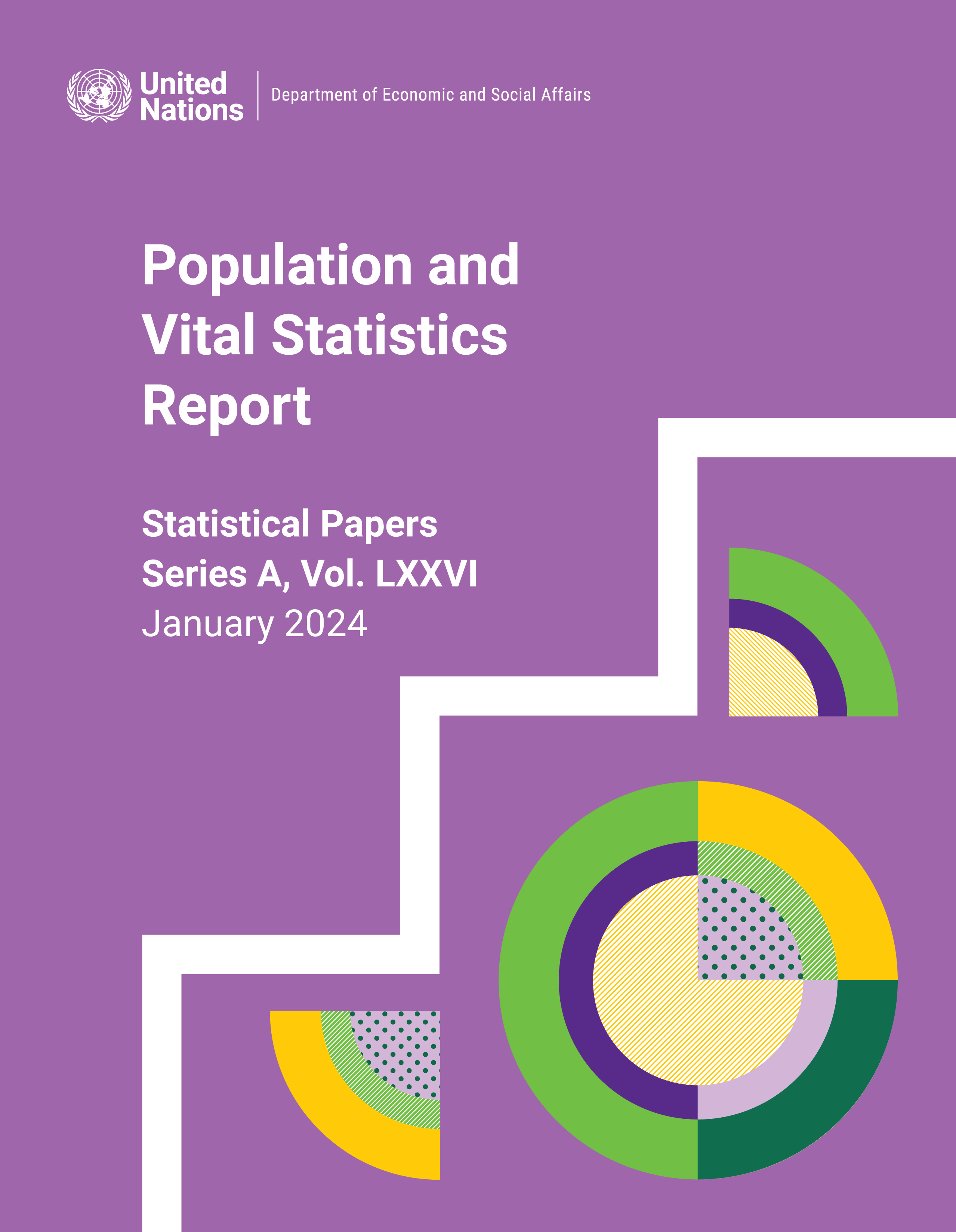
Population and Vital Statistics Report 2024
Data Available as of 1 January 2024
The Population and Vital Statistics Report presents data for countries or areas on population size (total male and female) from the latest available census estimated total population size for the latest available year and the number and rate of vital events (live births deaths and infant deaths) for the latest available year within the past 15 years. These data are presented as reported by national statistical authorities to the Demographic Yearbook of the Statistics Division of the United Nations Department of Economic and Social Affairs.
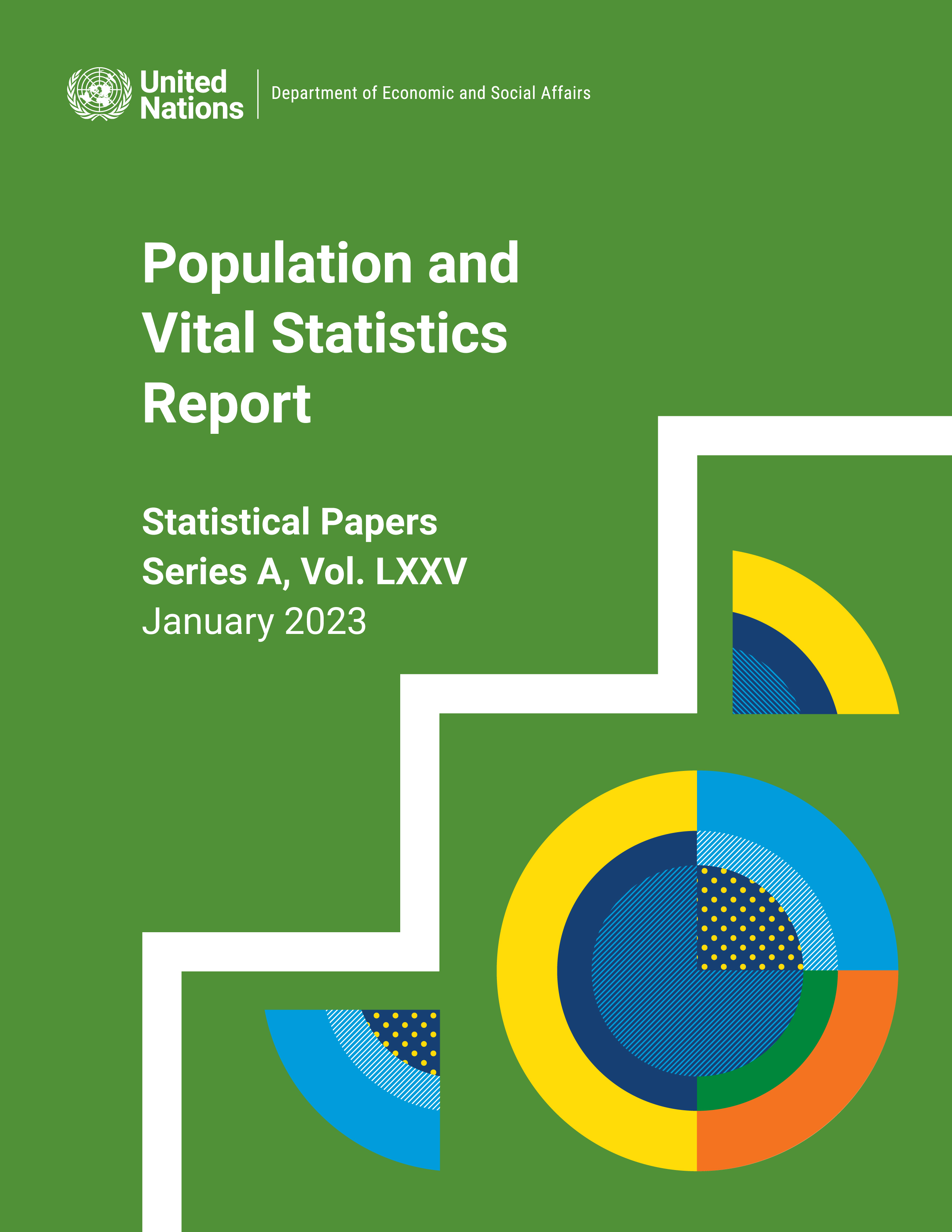
Population and Vital Statistics Report 2023
Data Available as of 1 January 2023
This issue of the Population and Vital Statistics Report presents data for countries or areas on population size (total male and female) from the latest available census estimated total population size for 2020 or 2021 (the later available year) and the number and rate of vital events (live births deaths and infant deaths) for the latest available year within the past 15 years (2007-2021). These data are presented as reported by national statistical authorities to the Demographic Yearbook of the Statistics Division of the United Nations Department of Economic and Social Affairs. This issue also presents population estimates for 2020 and 2021 of the world and its major areas and regions.
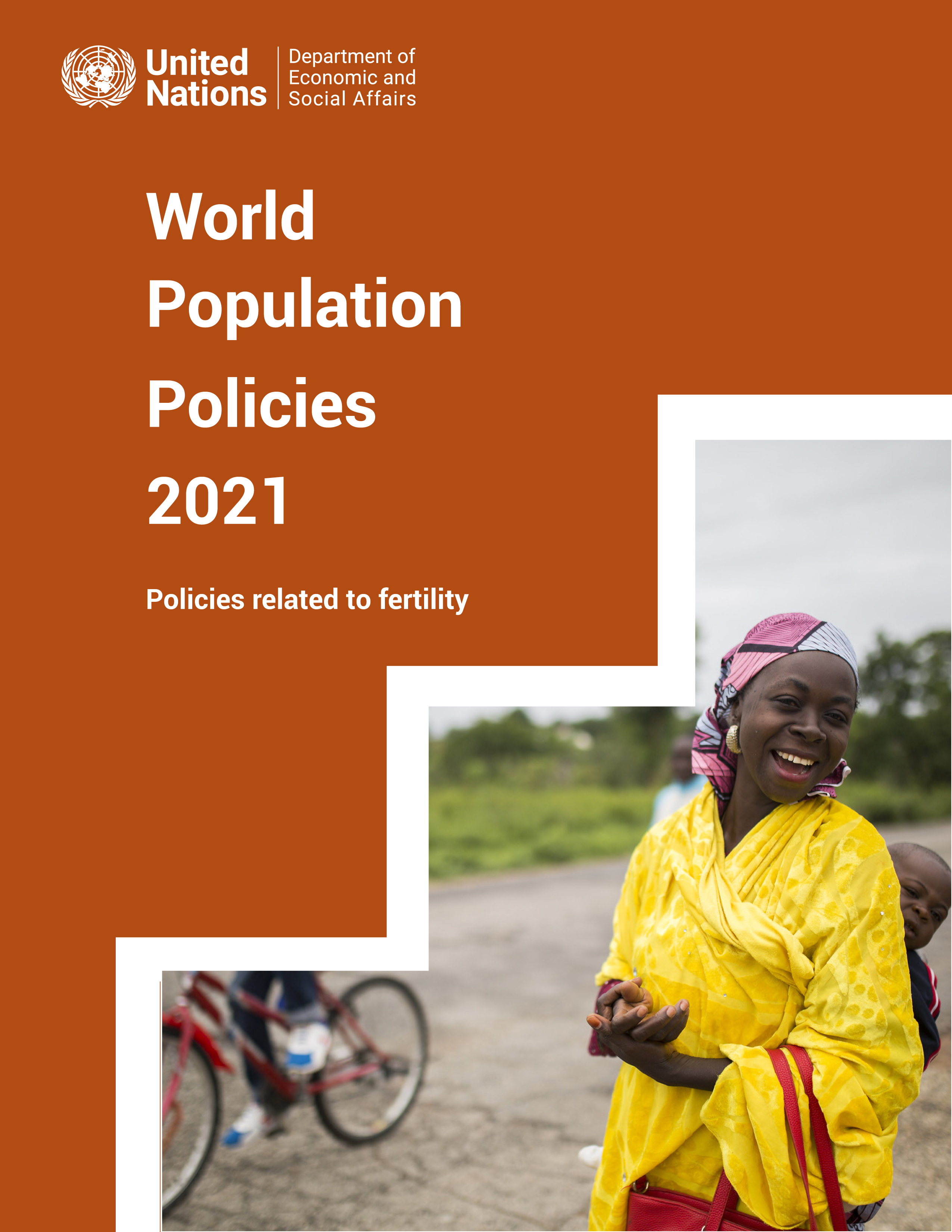
World Population Policies 2021
Policies Related to Fertility
The 2021 edition of the World Population Policies provides a brief overview of global fertility levels and trends since the early 1960s and explores government’s views and policies related to fertility. The analysis of views and policies draws on data gathered through 2019 and available in the World Population Policies Database (box 1) reflecting the situation before the outbreak of the coronavirus disease 2019 (COVID-19) pandemic. The report then presents five case studies of countries from different regions and with a range of fertility levels exploring in more detail the origin and evolution of national fertility policies. The case studies are followed by an assessment of known or potential direct and indirect impacts of the COVID-19 pandemic on fertility patterns and trends. The report concludes with an exploration of policy options that governments may wish to consider in the current context.
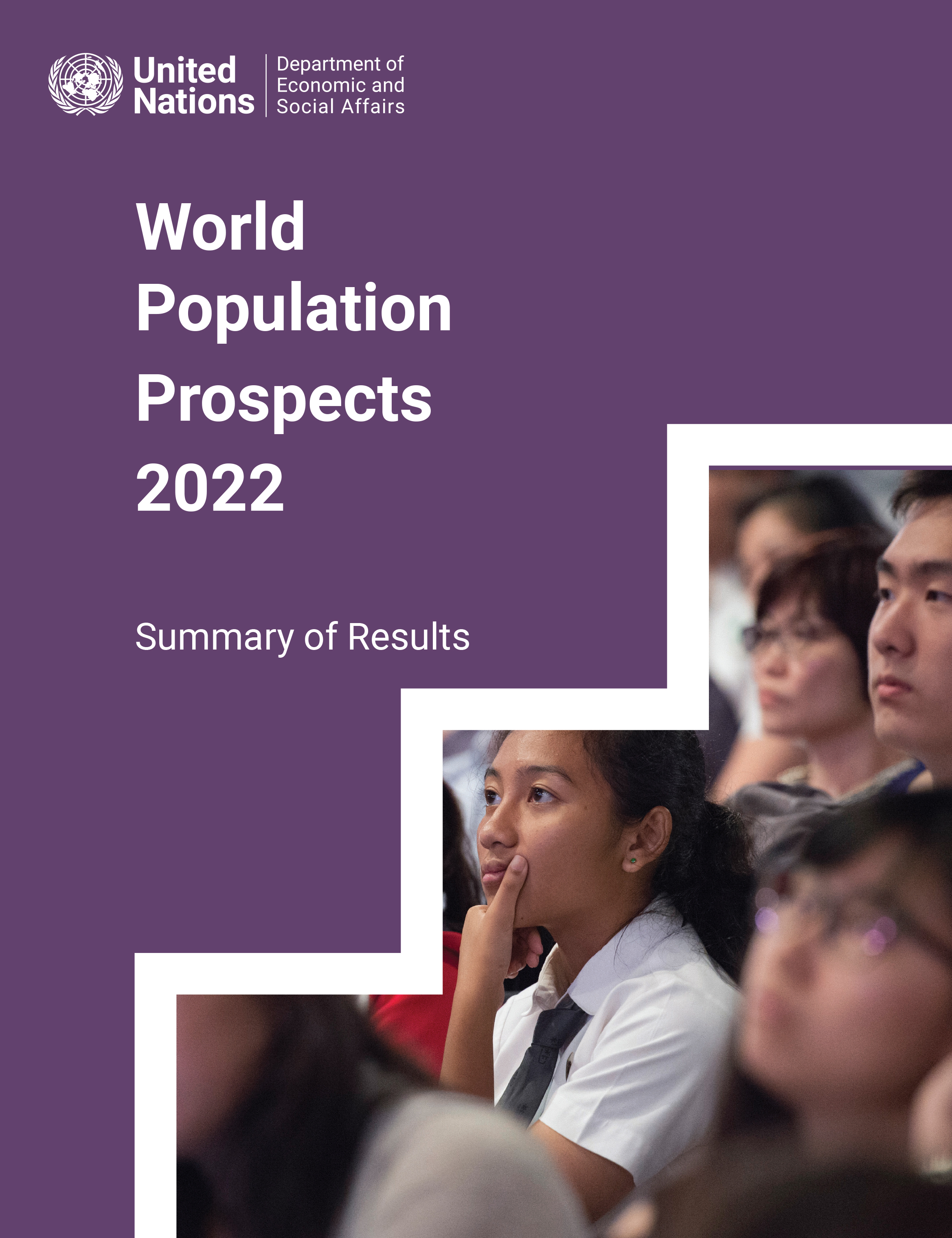
World Population Prospects 2022
Summary of Results
The next edition of the World Population Prospects will be the twenty-seventh set of global population estimates and projections published by the United Nations. It will provide comprehensive and consistent data for all countries and areas describing levels and trends in population size by age and sex and in the three components of population change (fertility mortality and international migration) at the national regional and global levels. The new data will incorporate the first results from the 2020 round of population and censuses (those conducted by early 2020) and the most recent data available on births deaths and international migration coming from surveys and registration systems worldwide. The report will summarize key population trends based on the World Population Prospects 2022 data set focusing on the period from 1950 to 2050 while also discussing the long-term implications of global population trends during the second half of the current century.
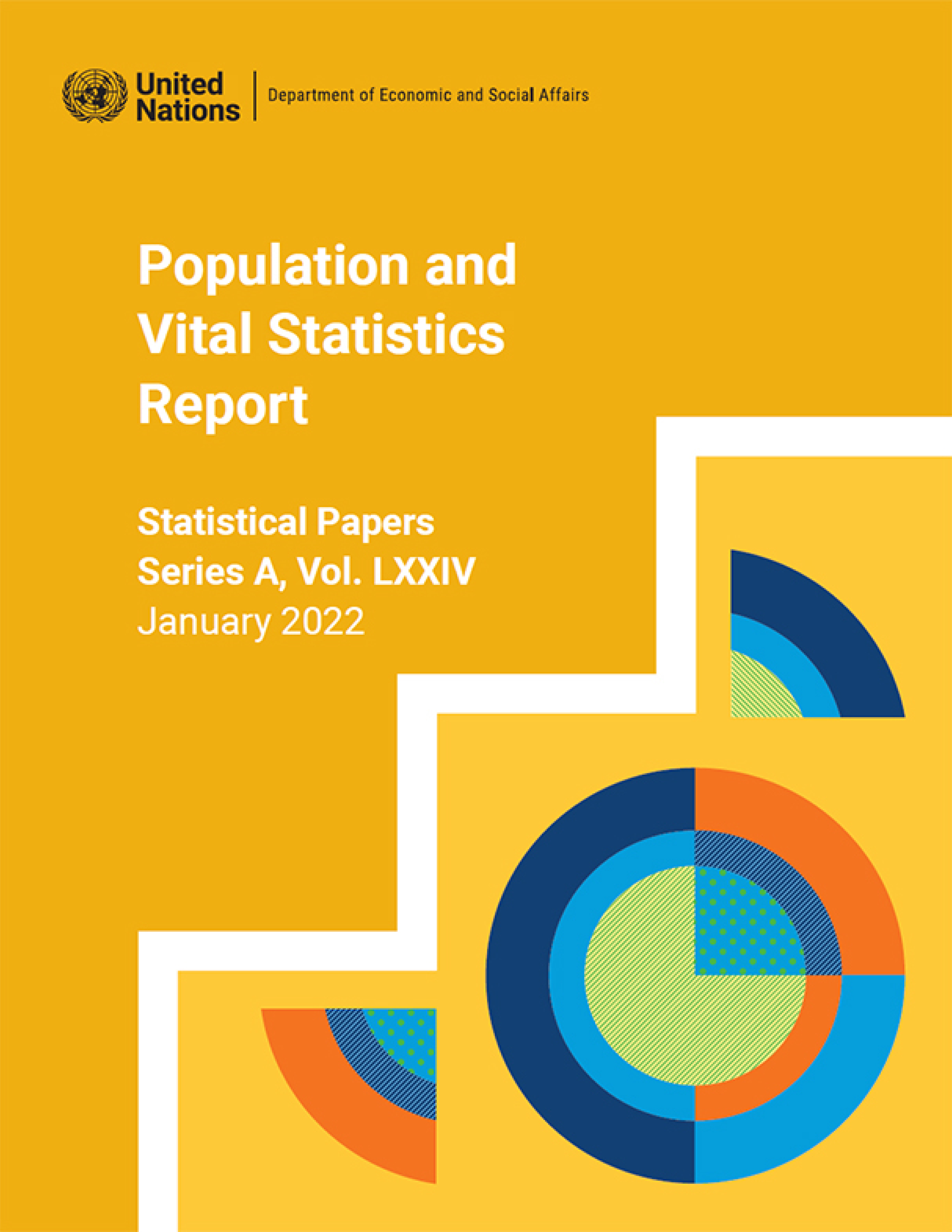
Population and Vital Statistics Report 2022
Data Available as of 1 January 2022
This issue of the Population and Vital Statistics Report presents data for countries or areas 1 on population size (total male and female) from the latest available census estimated total population size for 2019 or 2020 (the later available year) and the number and rate of vital events (live births deaths and infant deaths) for the latest available year within the past 15 years (2006-2020). These data are presented as reported by national statistical authorities to the Demographic Yearbook of the Statistics Division of the United Nations Department of Economic and Social Affairs. This issue also presents population estimates for 2019 and 2020 of the world and its major areas and regions.
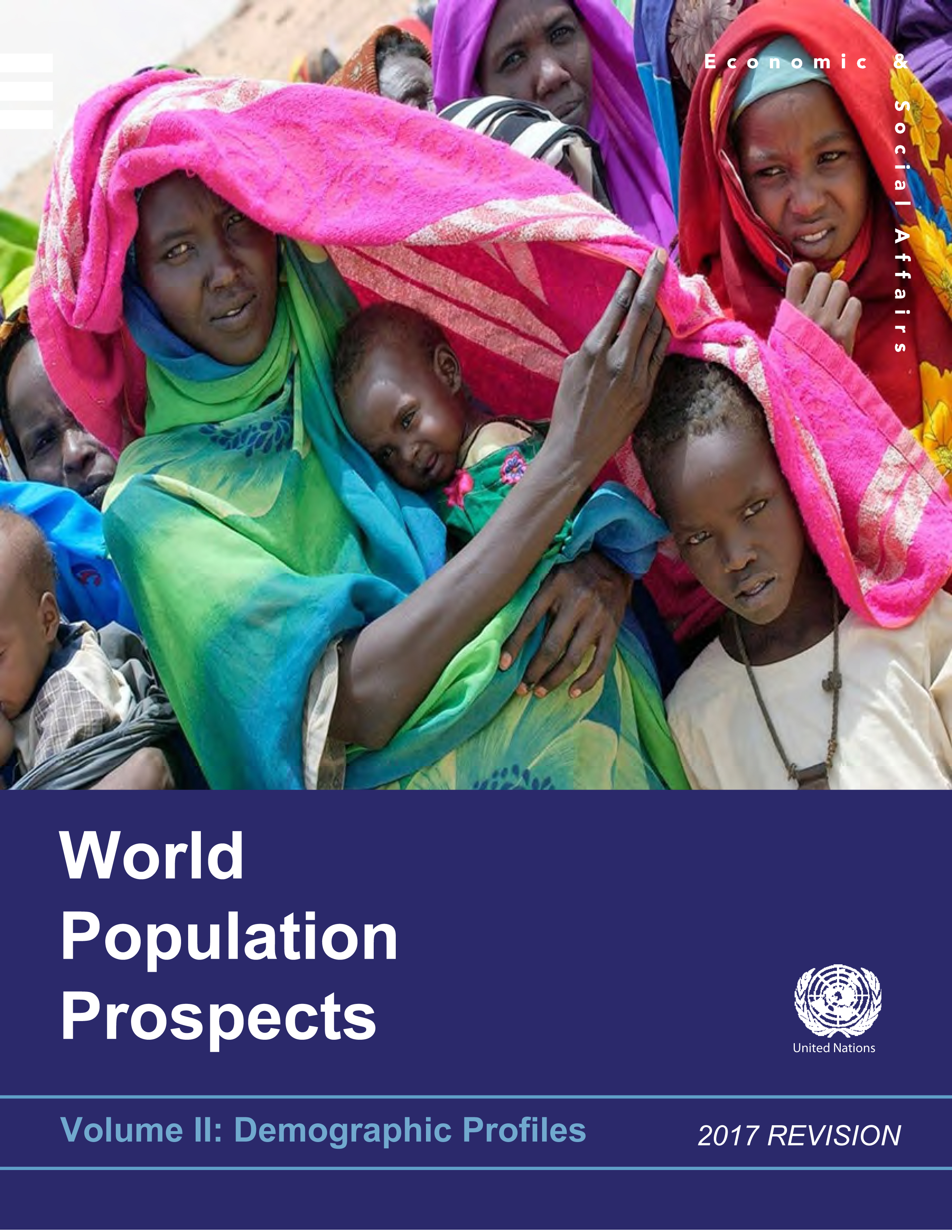
World Population Prospects 2017 - Volume II: Demographic Profiles
The United Nations population estimates and projections form a comprehensive set of demographic data to assess population trends at the global regional and national levels. The 2017 Revision of World Population Prospects represents the latest global set of demographic estimates and projections prepared by the Population Division of the Department of Economic and Social Affairs of the United Nations Secretariat. It constitutes the twenty-fifth round of global population estimates and projections produced by the Population Division since 1951. This volume of the 2017 Revision presents the demographic profiles of the official United Nations population estimates and projections. The demographic profiles display key demographic indicators for selected periods or dates between 1950-2100 for the world development groups regions subregions and countries or areas with more than 90000 inhabitants in 2017. In all tables and figures values for 1950-2015 are estimates and those thereafter are projections (medium variant). For each country or area the volume also provides a brief description of the data sources and demographic methods that were used to derive the base-year estimates.
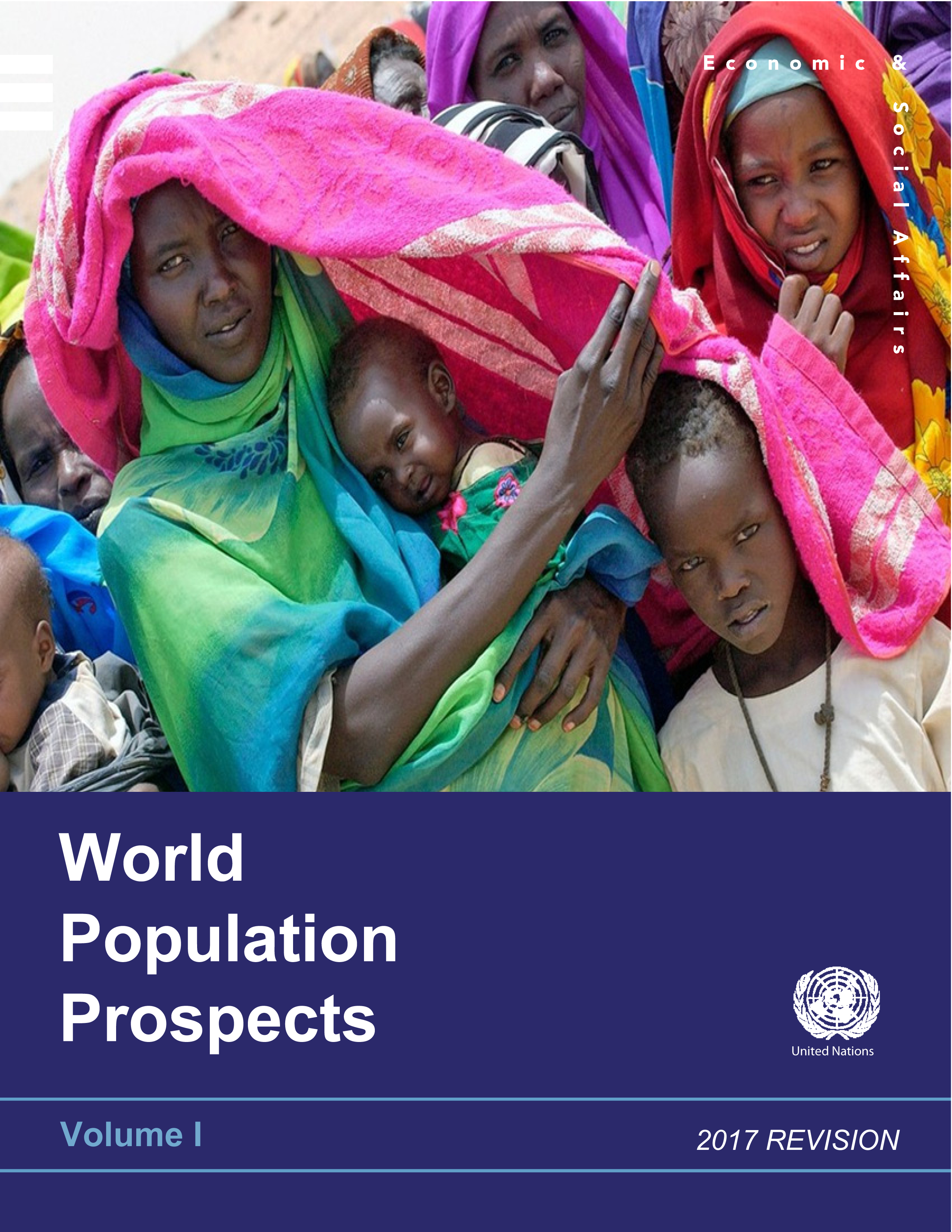
World Population Prospects 2017 - Volume I: Comprehensive Tables
The United Nations population estimates and projections form a comprehensive set of demographic data to assess population trends at the global regional and national levels. The 2017 Revision of World Population Prospects represents the latest global set of demographic estimates and projections prepared by the Population Division of the Department of Economic and Social Affairs of the United Nations Secretariat. It constitutes the twenty-fifth round of global population estimates and projections produced by the Population Division since 1951. This volume of the 2017 Revision presents the comprehensive tables of the official United Nations population estimates and projections displaying key demographic indicators for selected periods or dates from 1950 to 2100 for the world development groups regions subregions and countries or areas with more than 90000 inhabitants in 2017. For countries or areas with fewer than 90000 inhabitants in 2017 only figures related to population size and growth are provided. In all data tables figures for 1950-2015 are estimates and those thereafter are projections. The projections are presented for the medium high low and constant-fertility variants.
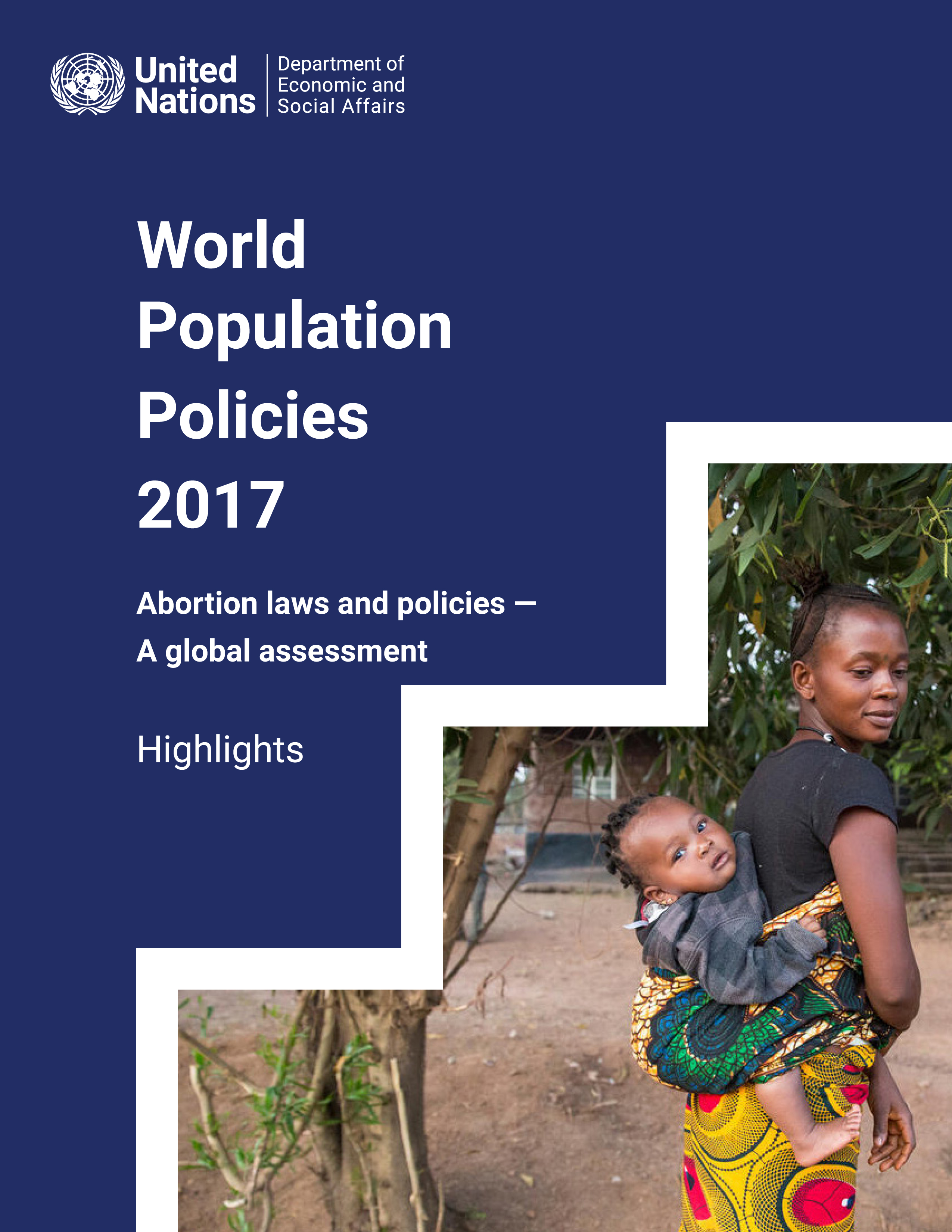
World Population Policies 2017: Highlights
Abortion Laws and Policies – A Global Assessment
This publication presents the highlights of the report World Population Policies 2017: Abortion Laws and Policies. It provides an overview of the laws and policies relating to induced abortion. It includes consideration of the various legal grounds and selected requirements for induced abortion including gestational limits the number of personnel required to authorise an abortion mandatory third-party consent and compulsory counselling and waiting periods.
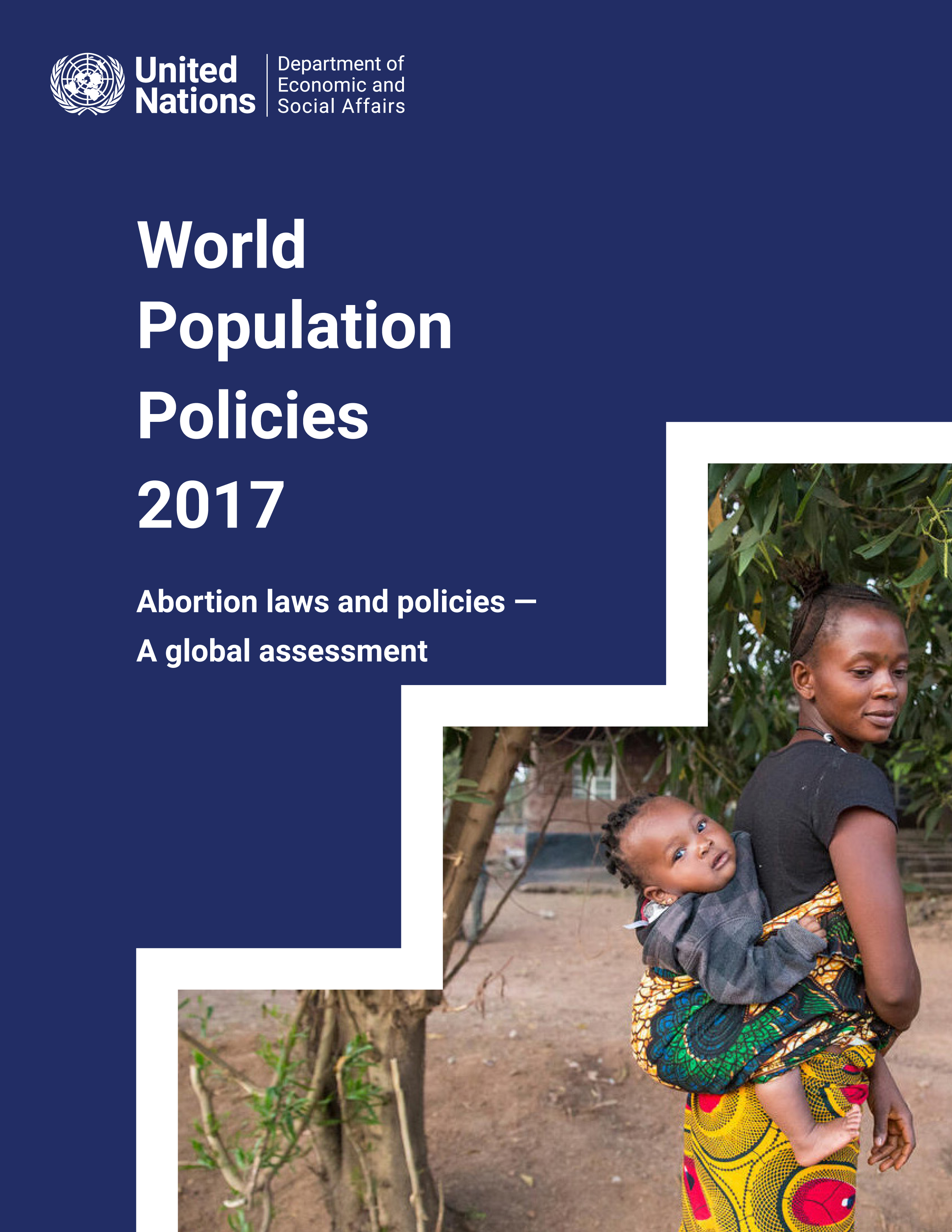
World Population Policies 2017
Abortion Laws and Policies – A Global Assessment
This publication provides an overview of laws and policies relating to induced abortion. It includes consideration of the various legal grounds for abortion and selected requirements for induced abortion including gestational limits the number of personnel required to authorise an abortion mandatory third-party consent and compulsory counselling and waiting periods.
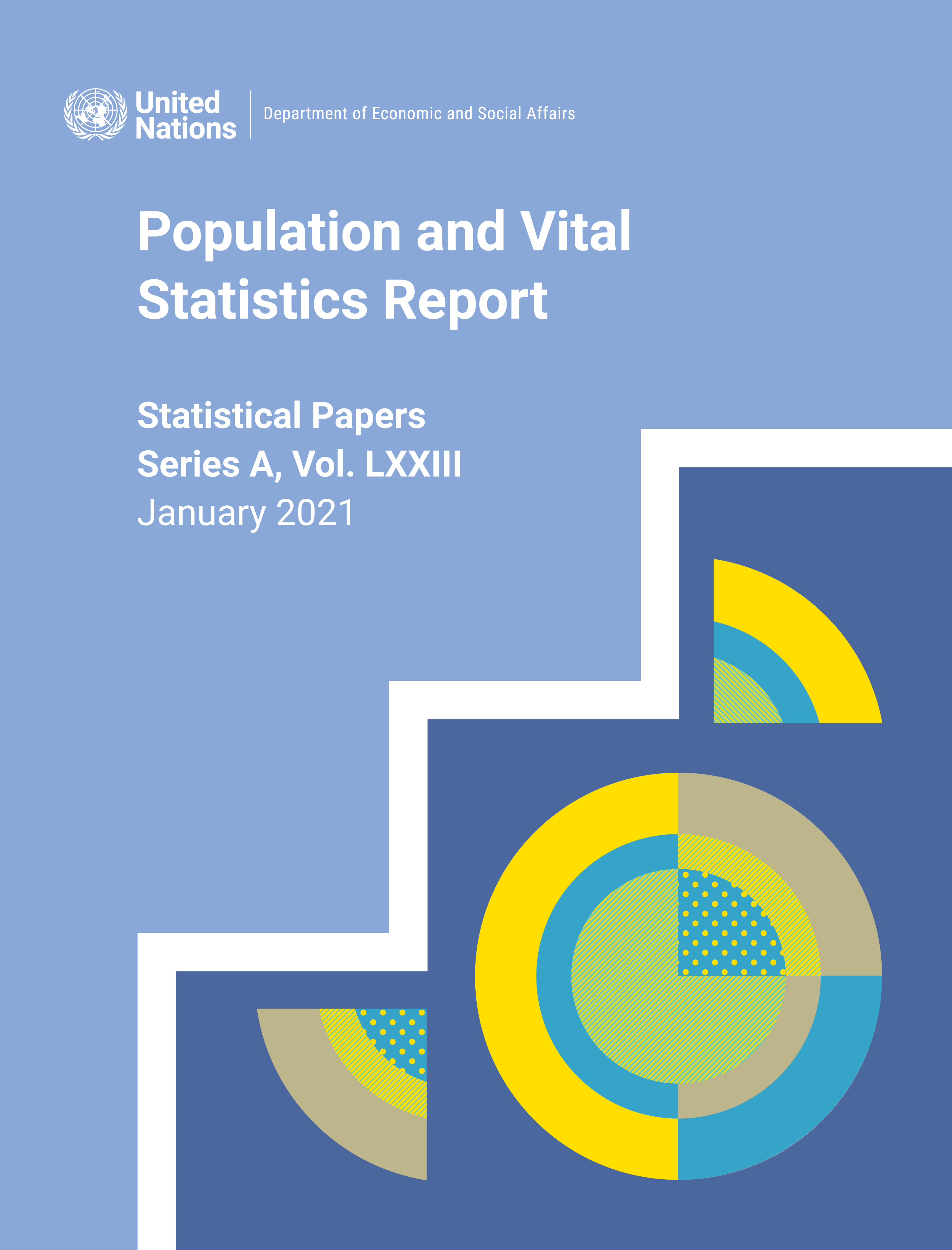
Population and Vital Statistics Report 2021
Data Available as of 1 January 2021
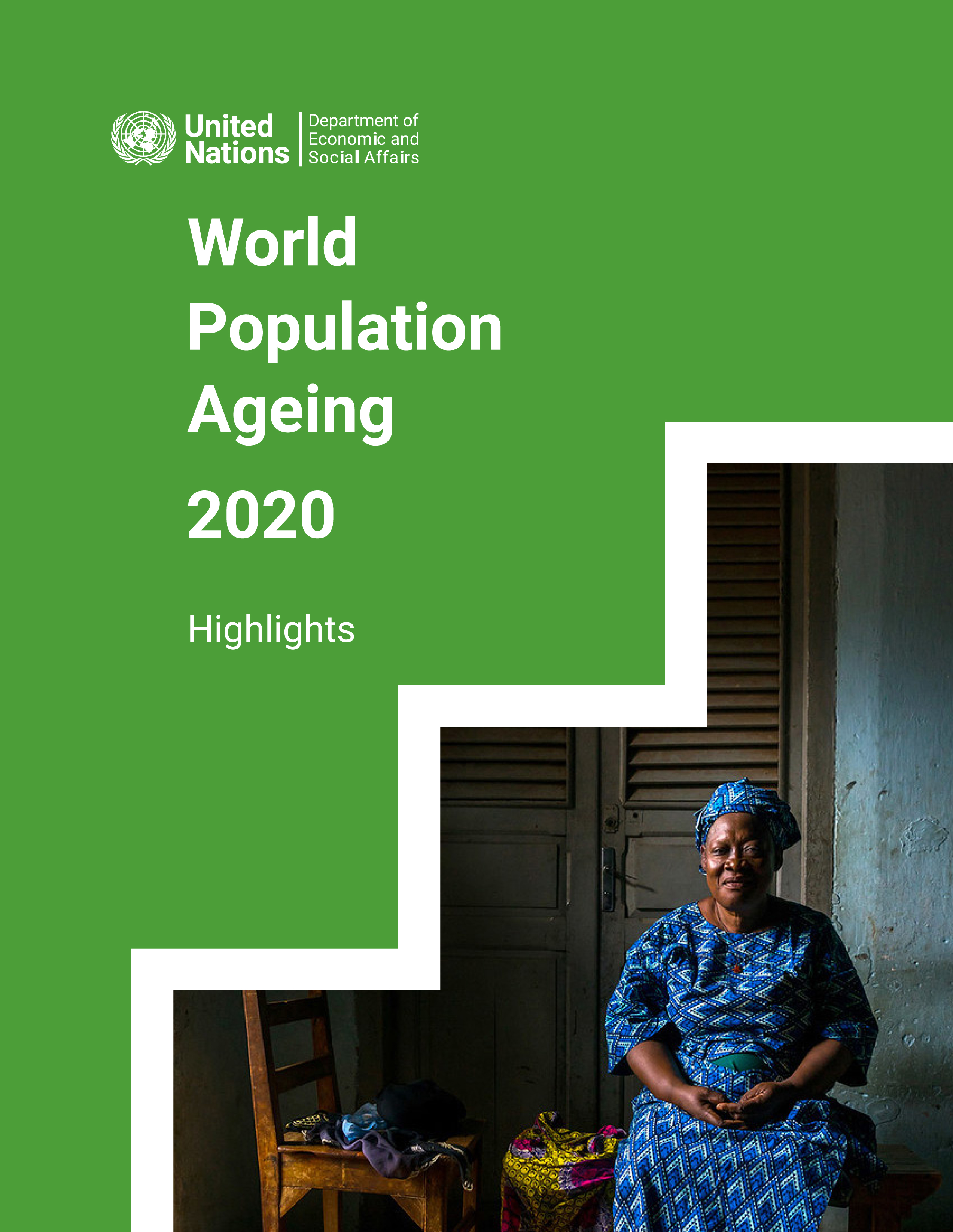
World Population Ageing 2020: Highlights
Living Arrangements of Older Persons
Drawing on the Household Living Arrangements of Older Persons 2019 Dataset the World Population Ageing 2020 Highlights will document key patterns and trends of the household living arrangements of older persons around the world. These levels or trends will be described using indicators such as the average number of persons per household the distribution of older persons by household type by type of living arrangement and select characteristics of heads of household. The report will also address the impact of living arrangements of older persons on their vulnerability to the COVID-19 (coronavirus) pandemic. It will conclude with a brief discussion of global and regional trends in policies on population ageing based on the most recently available data from the United Nations Inquiry among Governments on Population and Development (2019).
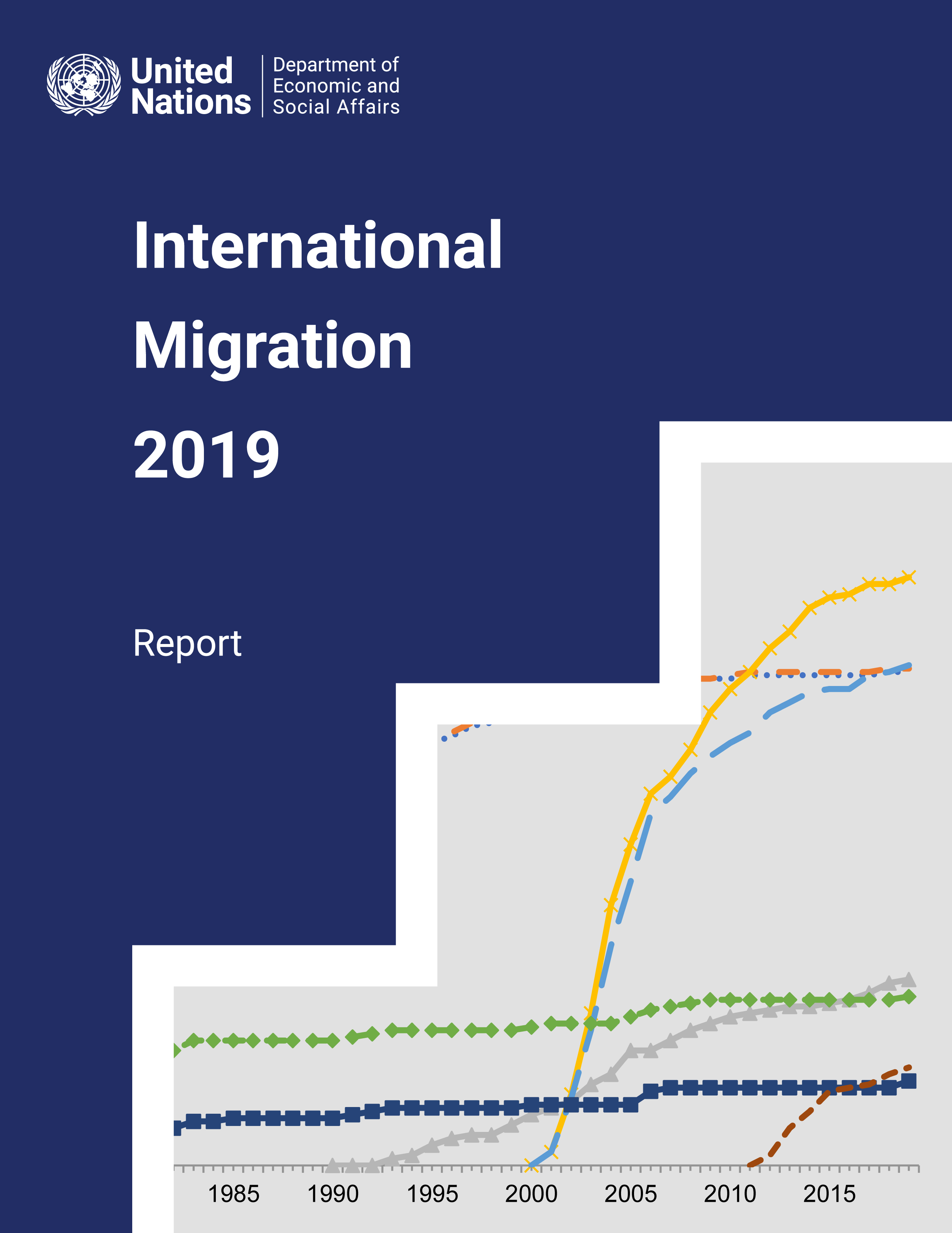
International Migration Report 2019
Migration has major impacts on both the people and the places involved. When supported by appropriate policies migration can contribute to inclusive and sustainable development in both origin and destination countries while also benefiting migrants and their families. The International Migration 2019 analyses global and regional levels and trends in international migration based on the latest estimates of international migrant stock and investigates the contribution of migration to demographic change. The highlights also discusses international migration policies and provides an overview of normative and legal frameworks on international migration and refugees.
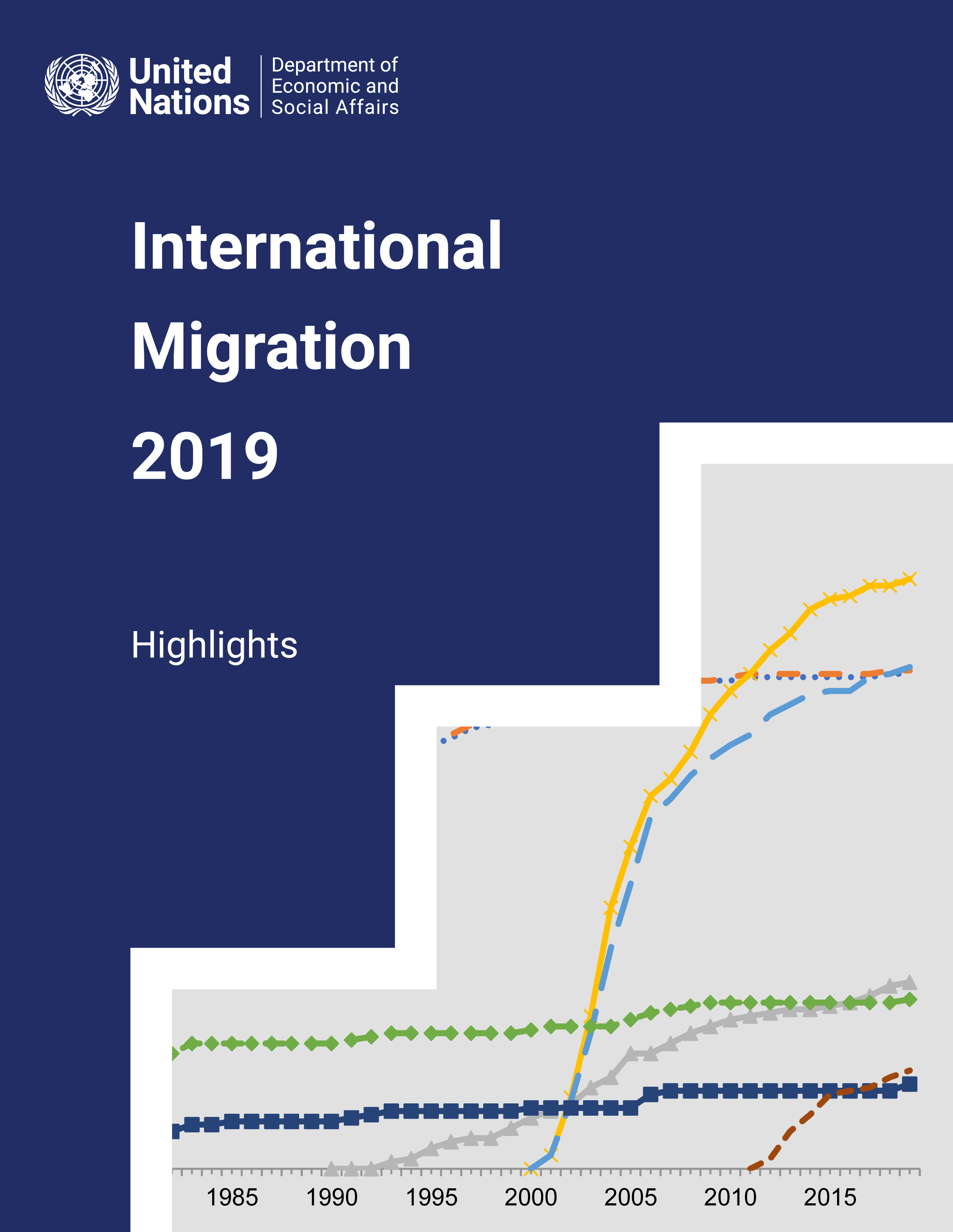
International Migration Report 2019: Highlights
Migration has major impacts on both the people and the places involved. When supported by appropriate policies migration can contribute to inclusive and sustainable development in both origin and destination countries while also benefiting migrants and their families. The International Migration 2019: Highlights analyses global and regional levels and trends in international migration based on the latest estimates of international migrant stock and investigates the contribution of migration to demographic change. The highlights also discusses international migration policies and provides an overview of normative and legal frameworks on international migration and refugees.
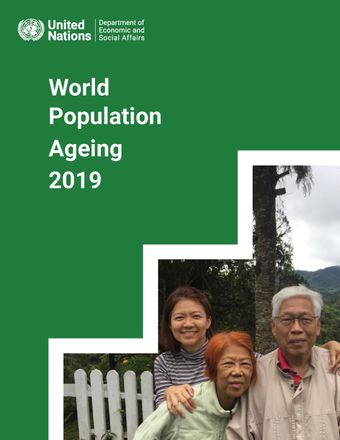
World Population Ageing 2019
Drawing on the 2019 revision of World Population Prospects the World Population Ageing 2019 (Highlights) documents global and regional trends in population ageing including consideration of the implications of these trends for the implementation of the 2030 Agenda. The report also presents various concepts and indicators related to population ageing and discusses related fiscal and economic implications.

World Population Policies 2019: Highlights
The 2019 edition of the World Population Policies: Highlights provides a summary of a selected number of Government policies and programmes related to international migration. It provides an overview of policies to govern regular migration and to address irregular migration and reviews an array of policy measures related to migrants’ rights including access to services as well as policies to foster the integration of migrants into host societies. The report also examines Government measures to maximise the development impacts of migration and to support diasporas. The 2019 World Population Policies: Highlights presents the official Government responses to the module on international migration (module III) of the United Nations Twelfth Inquiry among Governments on Population and Development (the “Inquiry”). The Population Division has been implementing the Inquiry every five years since 1963 as part of its mandate to systematically monitor population policies at the international level.
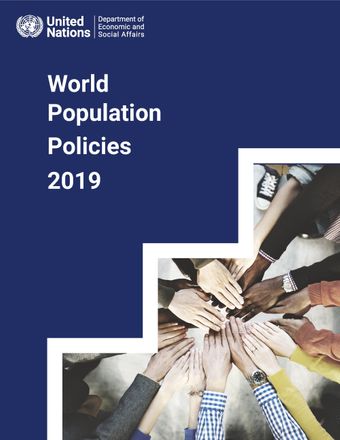
World Population Policies 2019
The 2019 edition of the World Population Policies report a report published biennially since 2003 focuses on Government policies and programmes on international migration. It provides an overview of policies to govern regular migration and to address irregular migration and reviews an array of policy measures related to migrants’ rights including access to services as well as policies to foster the integration of migrants into host societies. The report also examines Government measures to maximise the development impacts of migration and to support diasporas. The 2019 World Population Policies report presents the official Government responses to the module on international migration (module III) of the United Nations Twelfth Inquiry among Governments on Population and Development (the “Inquiry”). The Population Division has been implementing the Inquiry every five years since 1963 as part of its mandate to systematically monitor population policies at the international level.
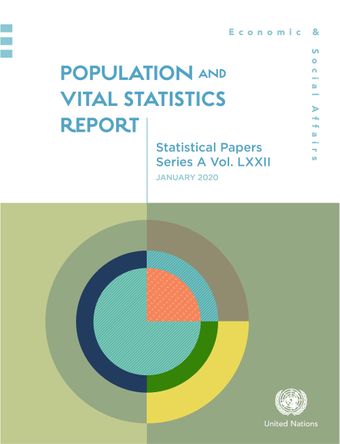
Population and Vital Statistics Report 2020
Data available as of 1 January 2020
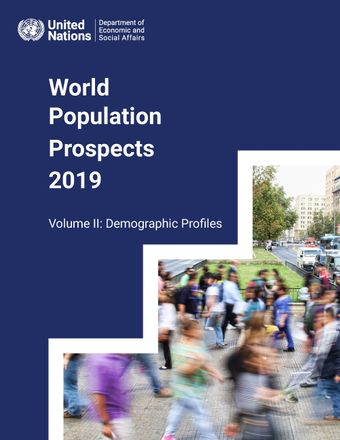
World Population Prospects 2019 - Volume II: Demographic Profiles
The United Nations population estimates and projections form a comprehensive set of demographic data to assess population trends at the global regional and national levels. The 2019 revision of the World Population Prospects is the twenty-sixth edition of the official United Nations population estimates and projections which have been prepared since 1951 by the Population Division of the Department of Economic and Social Affairs. The 2019 revision presents population estimates from 1950 until the present for 235 countries or areas which have been developed through country-specific analyses of historical demographic trends. It builds on previous revisions by incorporating additional results from the 2010 and 2020 rounds of national population censuses as well as information from vital registration and recent nationally representative household sample surveys. The 2019 revision also presents population projections to the year 2100 that reflect a range of plausible outcomes at the global regional and country levels. This volume of the 2019 Revision presents the demographic profiles of the official United Nations population estimates and projections. The demographic profiles display key demographic indicators for selected periods or dates between 1950-2100 for the world development groups regions subregions (50 aggregates) and 201 countries or areas with more than 90000 inhabitants in 2019. In all tables and figures values for 1950-2020 are estimates and those thereafter are projections (medium variant and lower and upper 95 per cent prediction intervals for figures). For each country or area the volume also provides a brief description of the data sources and demographic methods that were used to derive the base-year estimates of population and components of demographic change (fertility child adult and overall mortality international migration).
